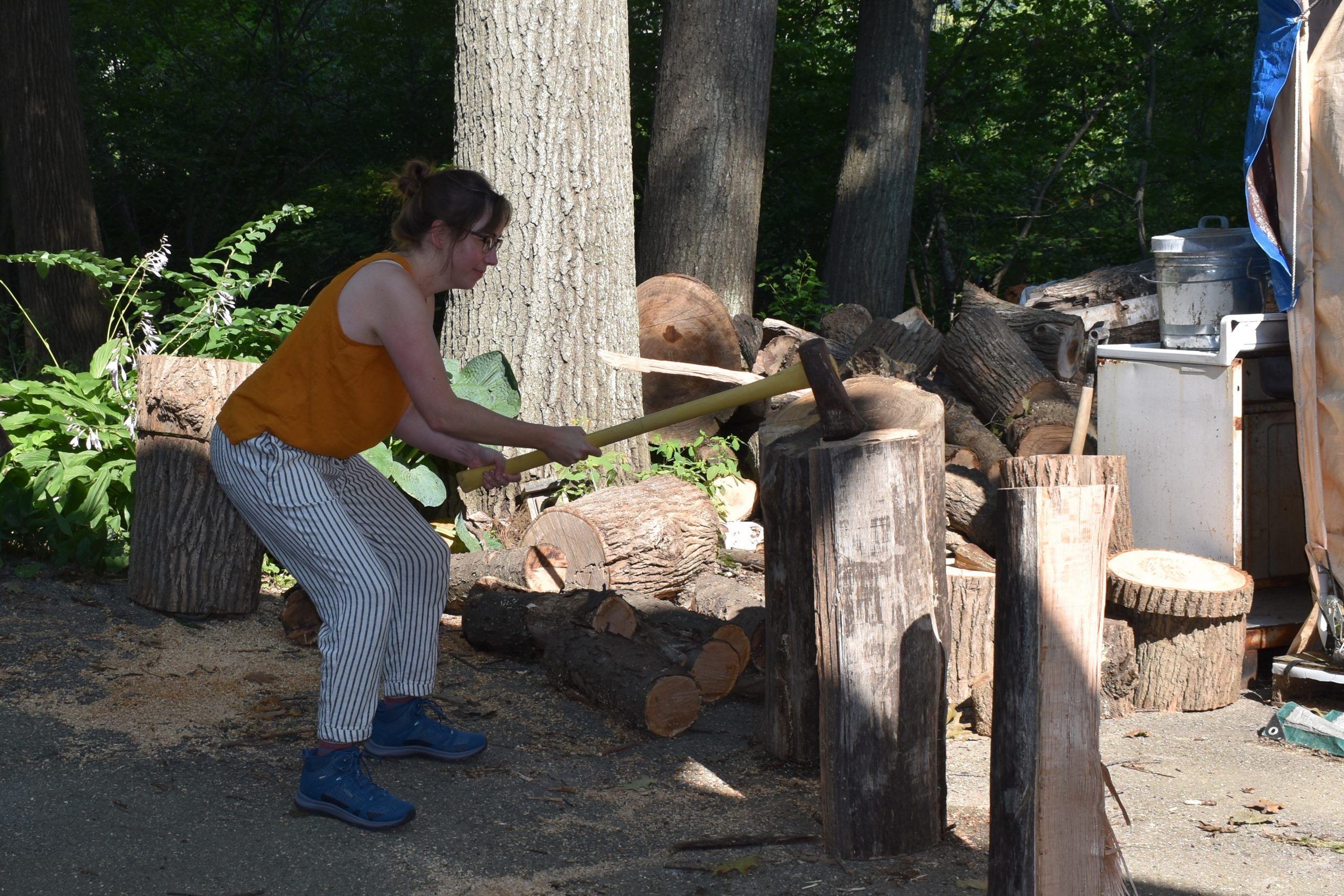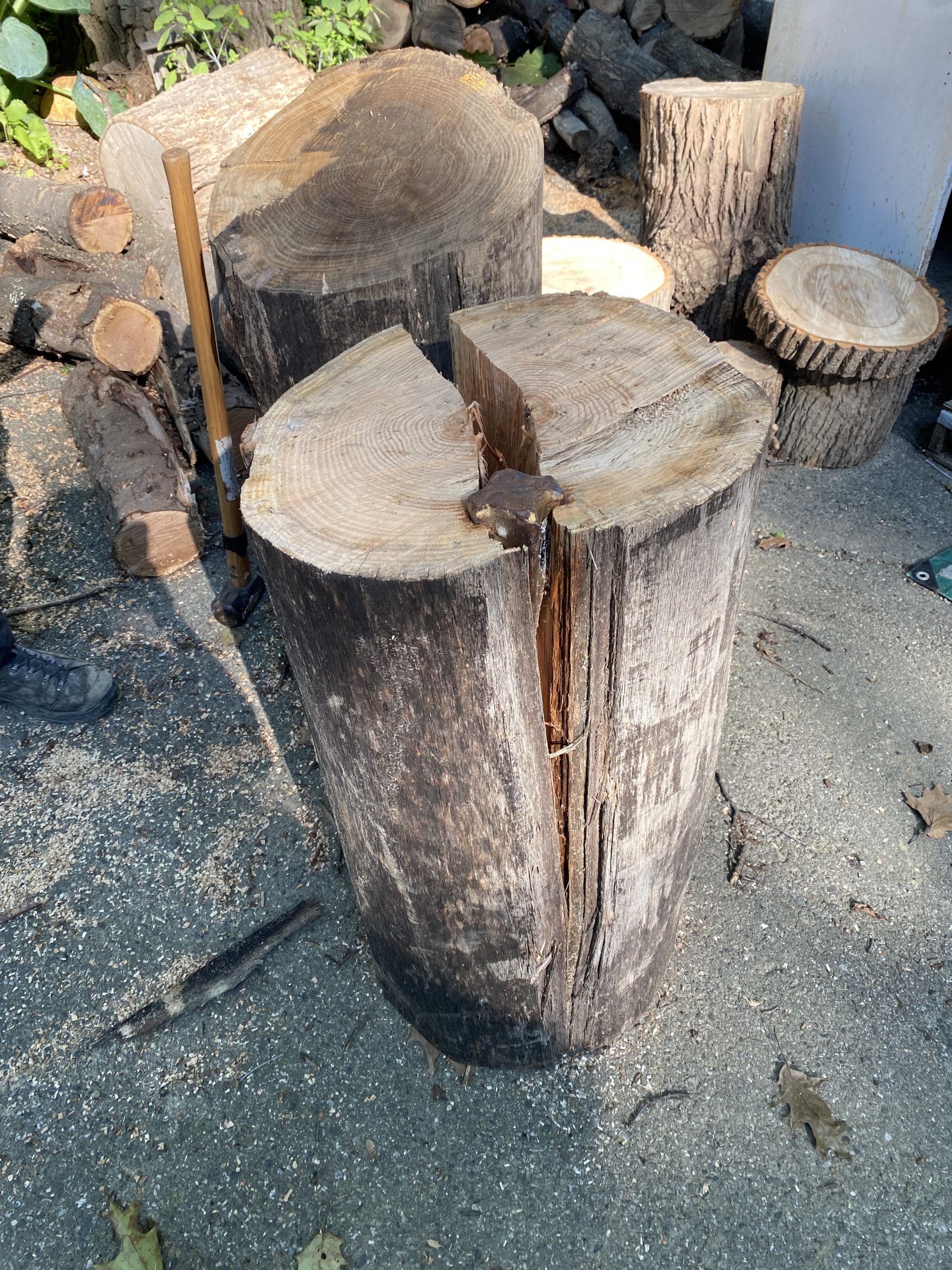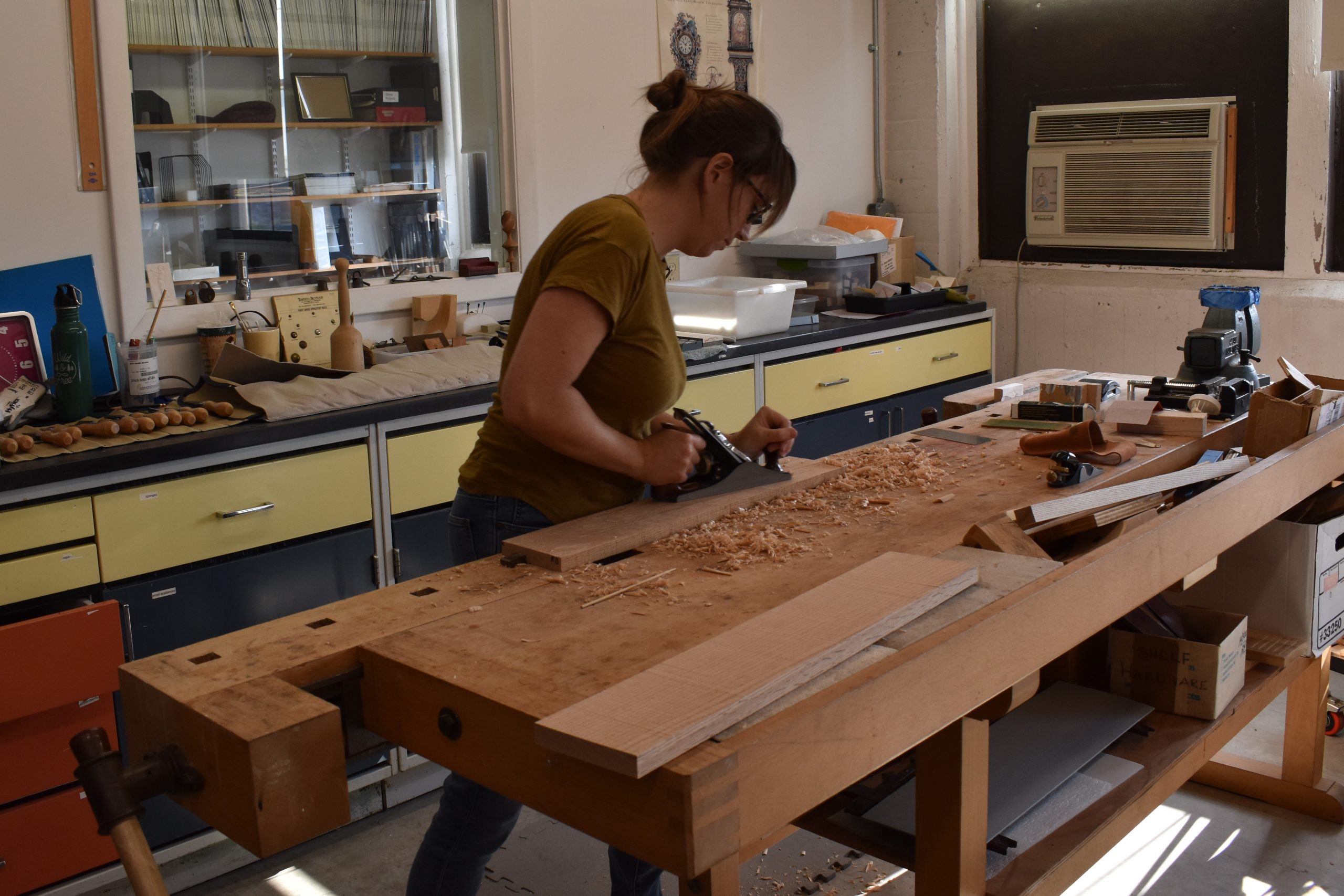Oct 13, 2021
Mellon Conservation Fellow Karen Bishop shares her process for creating a replica of a seventeenth-century carved drawer and box.
A recent project in the conservation lab showcases one of the ways Historic New England’s Mellon Conservation Fellows gain hands-on experience while working with collection objects and staff. This multi-part blog will show how Karen makes the replica, from design and wood selection, to using traditional hand tools for joinery, and decorative carving.
When Senior Curator Nancy Carlisle requested the re-creation of the missing lower half of a seventeenth-century carved oak box, it provided Karen Bishop with a great opportunity to explore traditional woodworking techniques. The replica will visually complete the top half of a box in the Historic New England collection.
Object details
Scholars attribute the box to the Searle/Dennis workshops of Ipswich, Massachusetts. Physical clues indicate the box looked much like a box from the same maker in the collection of the Bowdoin College Museum of Art, which has a lower portion with a carved drawer and sits on bun feet. The boxes share similar construction techniques and showcase the elaborate design patterns popular in this region during the late seventeenth century. To learn more about the provenance and historic significance of this box, visit its Collections Access page.
-

Box; Gift of Mrs. Wilton L. Putnam Historic New England -

Carved Box with Drawer; Bequest of H. Ray Dennis Bowdoin College Museum of Art, Brunswick, Maine
To determine how much wood was needed for the project, Karen recorded the dimensions of the box at Bowdoin and took notes on the joinery methods. She also closely examined the carving for tool marks and pattern layout.
Material
Both boxes are made primarily from red oak, a common tree in New England. Today, wood bought commercially is typically kiln dried, resulting in a low moisture content and high density that, in the case of red oak, make it very difficult to carve. For this reason, Karen made the drawer front from what is known as green wood. Green wood is timber processed from a freshly cut tree that still has a high moisture content.
-

Karen Bishop uses a maul. -

Wood begins to split.
Using green wood was a great opportunity to process wood the old-fashioned way. In order to end up with the correct dimensions for the drawer front of 26” wide and 4 ½” high, Karen needed to select a much larger log. Once she found a straight, even-grained log of oak, she drove a steel wedge into it using a sledgehammer. This created a crack through the center that she worked further with a maul until the log split in half. Then she split each half into quarters using the same method.
Once the log was quartered and a manageable size, it could be worked into planks. For this step, a seventeenth-century woodworker would have used a froe, which is an L-shaped hand tool used to split wood along the grain. To save time and material, Karen used a bandsaw to roughly cut planks to dimension and square, then returned to traditional methods using a hand plane to smooth the parallel faces.
-

Quartered log and bandsaw -

Karen uses a hand plane to surface wood face.
Process
Processing the wood this way allowed Karen to select exactly where in the tree the drawer face came from. The drawer front is made from quarter-sawn oak, resulting in a grain that is straight in all directions. This makes it easier to carve and more dimensionally stable. This is important because green wood naturally loses moisture over time and shrinks. An uneven grain is more likely to lead to warping and cracking. Now that the wood is thin, Karen will need to work quickly before it dries out and becomes harder to carve.
Stay tuned for the next installment, in which Karen carves the decorative face of the drawer front.
Karen Bishop is the Mellon Conservation Fellow at Historic New England.
